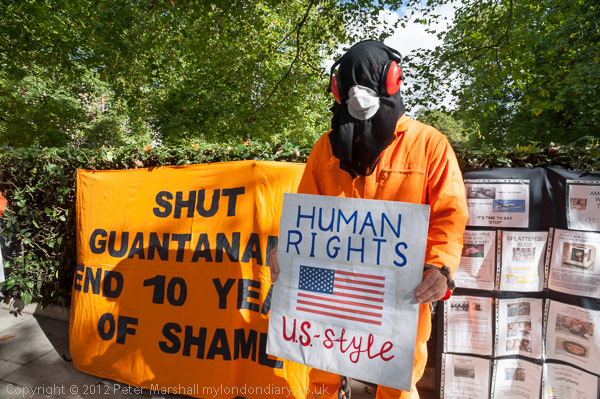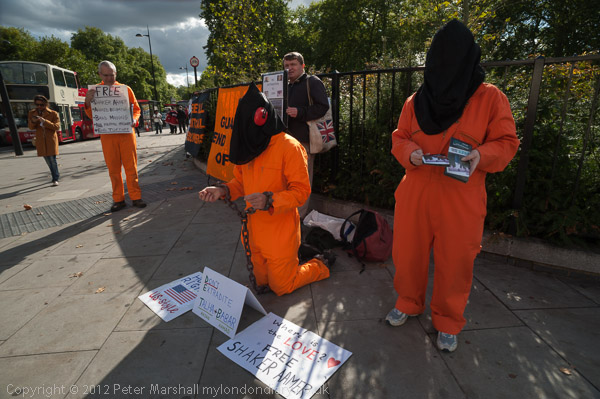
One of my favourite lenses, though not one that I’ve used a great deal for a while is the 20mm f2.8 AF Nikkor, which is a relatively small and light lens. Even with its lens hood it doesn’t make a huge impact on the front of the camera. I had it for a couple of years before I bothered with the hood, as I’d bought it on e-Bay without one, but more recently I’d got round to getting a cheap version of the HB-4 for hardly more than the cost of postage from Hong Kong. The main purpose of lens hoods for lenses this wide is of course to stop your fingers walking onto the lens and leaving their greasy prints to leave their marks on your images, invisible until you see the image large on your computer screen.

I thought the 16-35mm had recovered from its soaking a couple of days before, but the next time I tried it out the electronics had completely gone – now autofocus would never work and there was no tiny buzz from the VR whether it was switched on or off. The time had definitely come to take it in for service.
It was a few days later that I got the bad news from the repair company. It had, the report said, been subject to impact and water damage and was in need of a new body. I was disappointed – surely one point of pro lenses is that they should take a bit of hard wear and not go legs up; what this lens had been subjected to was what I’d think of as normal professional use. If I can get away without having to have a new body after it (though there are a few bits I could do with a replacement for) surely a lens should. The repair cost was almost half that of a replacement, which was a blow, and it would take around a week to get the parts and get the job done.
So for the next week or so – it turned out to be a little longer before I could go and collect it – I was without the 16-35mm. I had a choice of lenses available. I still have the old Sigma 12-24mm which covers the full 35mm frame, but is better used on DX, where it becomes an almost direct replacement in terms of focal length – an 18-36mm. I’ve also got a Sigma DX 10-20mm – which is a little smaller and lighter and gives me a 15-30mm equiv.
It was the weather that put me off the 12-24mm, which has a bulbous front element and can’t have a front filter fitted. I’ve been worried about this since I had to have another expensive repair to replace a scratched front element. All the wiping that you need to do in the rain isn’t healthy for optical glass, and while I don’t mind replacing a £2.50 best Chinese UV filter I baulk at the £250 or so for a new front element – as well as the 6 weeks it took Sigma to get one from Japan to London. The 10-20mm was more of a possibility, but although it was fine on a D200 body, I’m not sure about it on the D800E which is more demanding because the sensor is more crowded. Using it on the D700 was perhaps better, but the files are rather small, under 6Mp. So in the end I decided to try working with the 20mm f2.8 as my only wide-angle.

The 20mm on the D700 was teamed with my usual 18-105mm DX lens on the D800, which may seem a strange way to use the D800E, but one that I really do like. At the wider end it’s a fairly mild 27mm equivalent and at the long end a useful but not extreme telephoto, but the real advantage is in the viewfinder where you can see outside the image area. I’ve moved from using it with just a frame line for the smaller format to having the non-image area greyed over but still visible. It is incredibly useful to be able to see outside the frame – like with a rangefinder camera, though I’d perhaps like an option to make the grey area just a little less dull compared to normal.

The only problem I found was that the 20mm wasn’t quite wide enough for a few things I wanted or needed to do, particularly when working as I sometimes have to with a pack of photographers. You do need 16mm at times – and there are even times when that isn’t wide enough, which is why I usually pack the 10.5mm DX semi-fisheye. If that isn’t wide enough you are trying to do the impossible. And that does work pretty well on the D800E, so well I’ve hardly though about replacing it by the 16mm FX equivalent.
During the couple of weeks I used it as my main wideangle I really got to like working with a fixed rather than a zoom lens again, and the smaller bulk and weight certainly felt better around my neck. But it is just a little less versatile.
Though I’ve also been using it at times when I’m not really working but just want to go out without a camera bag, just one camera around my neck. The 20mm on the D800 is a bit like a Tri-Elmar on a Leica (not that I’ve ever afforded one) but by switching from FX to 1.2x to DX you have a 20mm, a 24mm and a 30mm all from the one lens.
All the pictures on this post were taken with the 20mm f2.8 in FX format on the D700 and come from two stories, Shut Down Guantánamo, Halt Extraditions and Justice For Yarl’s Wood Women which you can see on My London Diary.
________________________________________________________
My London Diary : Buildings of London : River Lea/Lee Valley : London’s Industrial Heritage
All photographs on this and my other sites, unless otherwise stated are by Peter Marshall and are available for reproduction or can be bought as prints.
To order prints or reproduce images
________________________________________________________